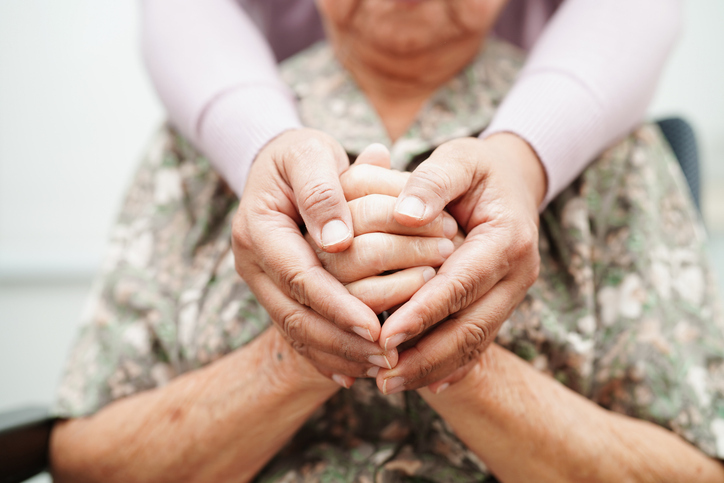By Dan Munro

Released on Friday, the survey of 700 Registered Nurses at over 250 hospitals in 31 states included some sobering preliminary results in terms of hospital policies for patients who present with potentially infectious diseases like Ebola.
- 80% say their hospital has not communicated to them any policy regarding potential admission of patients infected by Ebola
- 87% say their hospital has not provided education on Ebola with the ability for the nurses to interact and ask questions
- One-third say their hospital has insufficient supplies of eye protection (face shields or side shields with goggles) and fluid resistant/impermeable gowns
- Nearly 40% say their hospital does not have plans to equip isolation rooms with plastic covered mattresses and pillows and discard all linens after use, less than 10 percent said they were aware their hospital does have such a plan in place
- More than 60% say their hospital fails to reduce the number of patients they must care for to accommodate caring for an “isolation” patient
National Nurses United (NNU) started the survey several weeks ago and released the preliminary results last Friday (here). The NNU has close to 185,000 members in every state and is the largest union of registered nurses in the U.S.
The release of the survey coincided with Friday’s swirling controversy on how the hospital in Dallas mishandled America’s first case of Ebola. The patient ‒ Thomas E. Duncan ‒ was treated and released with antibiotics even though the hospital staff knew of his recent travel from Liberia ‒ now the epicenter of this Ebola outbreak.
On October 2, the hospital tried to lay blame of the mishandled Ebola patient on their electronic health record (EHR) software with this statement.
Protocols were followed by both the physician and the nurses. However, we have identified a flaw in the way the physician and nursing portions of our electronic health records (EHR)interacted in this specific case. In our electronic health records, there are separate physician and nursing workflows. Texas Health Presbyterian Hospital Statement ‒ October 2 (here)
Within 24 hours, the hospital recanted the statement by saying no, in fact, “there was no flaw.”
The larger issue, of course, is just how ready are the more than 5,700 hospitals around the U.S. when it comes to diagnosing and then treating suspected cases of Ebola. Given the scale of the outbreak (a new case has now been reported in Spain ‒ Europe’s first), it’s very likely we’ll see more cases here in the U.S.
As an RN herself ‒ and Director of NNU’s Registered Nurse Response Network ‒ Bonnie Castillo was blunt.
What our surveys show is a reminder that we do not have a national health care system, but a fragmented collection of private healthcare companies each with their own way of responding. As we have been saying for many months, electronic health records systems can, and do, fail. That’s why we must continue to rely on the professional, clinical judgment and expertise of registered nurses and physicians to interact with patients, as well as uniform systems throughout the U.S. that is essential for responding to pandemics, or potential pandemics, like Ebola. Bonnie Castillo, RN ‒ Director of NNU’s Registered Nurse Response Network (press release)
As a part of their Health Alert Network (HAN), the CDC has been sounding the alarm since July ‒ and released guidelines for evaluating U.S. patients suspected of having Ebola through the HAN on August 1 (HAN #364). As a part of alert #364, the CDC was specific on recommending tests “for all persons with onset of fever within 21 days of having a high‒risk exposure.” Recent travel from Liberia in West Africa should have prompted more questioning around potential high-risk exposure ‒ which was, in fact, the case.
As it was, a relative called the CDC directly to question the original treatment of Mr. Duncan given all the circumstances.
“I feared other people might also get infected if he wasn’t taken care of, and so I called them [the CDC] to ask them why is it a patient that might be suspected of this disease was not getting appropriate care.” Josephus Weeks ‒ Nephew of Dallas Ebola patient to NBC News
The CDC has also activated their Emergency Operations Center (EOC).
The EOC brings together scientists from across CDC to analyze, validate, and efficiently exchange information during a public health emergency and connect with emergency response partners. When activated for a response, the EOC can accommodate up to 230 personnel per 8-hour shift to handle situations ranging from local interests to worldwide incidents.
The EOC coordinates the deployment of CDC staff and the procurement and management of all equipment and supplies that CDC responders may need during their deployment.
In addition, the EOC has the ability to rapidly transport life-supporting medications, samples and specimens, and personnel anywhere in the world around the clock within two hours of notification for domestic missions and six hours for international missions.
Source: Forbes





